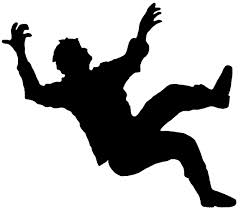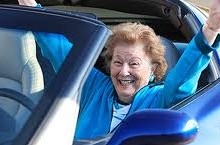 In a season with snow already blowing, we may think more about “winter-proofing,” but I would like to continue with “fall-proofing.” In my last posting, I wrote about how common falls among older adults are and some home improvements that can reduce the risk. I would like to take this conversation a bit further by talking about what are referred to as the intrinsic and extrinsic risk factors for falls. You will see that these offer two more “big picture” ways to both assess an older loved one’s fall risk and to safeguard against those risks.
In a season with snow already blowing, we may think more about “winter-proofing,” but I would like to continue with “fall-proofing.” In my last posting, I wrote about how common falls among older adults are and some home improvements that can reduce the risk. I would like to take this conversation a bit further by talking about what are referred to as the intrinsic and extrinsic risk factors for falls. You will see that these offer two more “big picture” ways to both assess an older loved one’s fall risk and to safeguard against those risks.
Intrinsic Factors: The intrinsic risk factors are those that an older adult carries with them wherever they go, the most common simply is age. With more birthdays will come a decrease in muscle strength and tone, diminished vision and a decline in agility. And with age will come some chronic conditions that may not have been an issue when a person was younger. Increased age also translates into decreased bone density which simply means that the falls that a younger person can incur without complications now can become a hip or long bone fractures for a more mature adult. All of these risks conspire to create challenges to an older person’s ability to maintain their balance.
Extrinsic Factors: The extrinsic risk factors are those that are introduced to the older person. Many medicines or treatments can cause dizziness by either reducing blood pressure or by interfering with the inner ear’s balance. I talked about loss of strength as an intrinsic issue, but a loss of muscle mass in the feet for an older person whose shoes therefore do not fit as snugly can pose its own imbalance and fall hazard. Alcohol consumption can be an extrinsic risk as older individuals’ tolerance for alcohol is diminished. And the dehydration that can come from alcohol or any diuretic consumption may cause dizziness.
So, if you are a caregiver to an older loved one, what can you do to address what seem to be the human forces of nature and aging? Here are some suggestions from the Centers for Disease Control. Encourage your older loved one to:
• Exercise. Regular exercise strengthens muscles and bones for better balance and resilience.
• Inventory the meds. Ask a local pharmacist or their primary care provider to review all prescription and over the counter medications for potential interactions or unwanted side effects.
• Schedule a regular eye exam. What your older loved cannot see can hurt them, so have their vision checked at least once a year.
• Rise slowly. Encourage your loved one to slowly get up from a chair or their bed to avoid the light-headedness that can result in a fall.
• Wear shoes. Shoes will give a surer footing both inside and outside. Barefoot or slippers do not give the support or sure footing of properly fitted shoes.
• Turn on the lights. Check throughout your loved one’s house to upgrade where possible to brighter bulbs and add lighting to any dark or shadowy areas.
Charlotte Bishop is a Geriatric Care Manager and founder of Creative Care Management, certified professionals who are geriatric advocates, resources, counselors and friends to older adults and their families in metropolitan Chicago. Please email your questions to info@creativecaremanagement.com.





